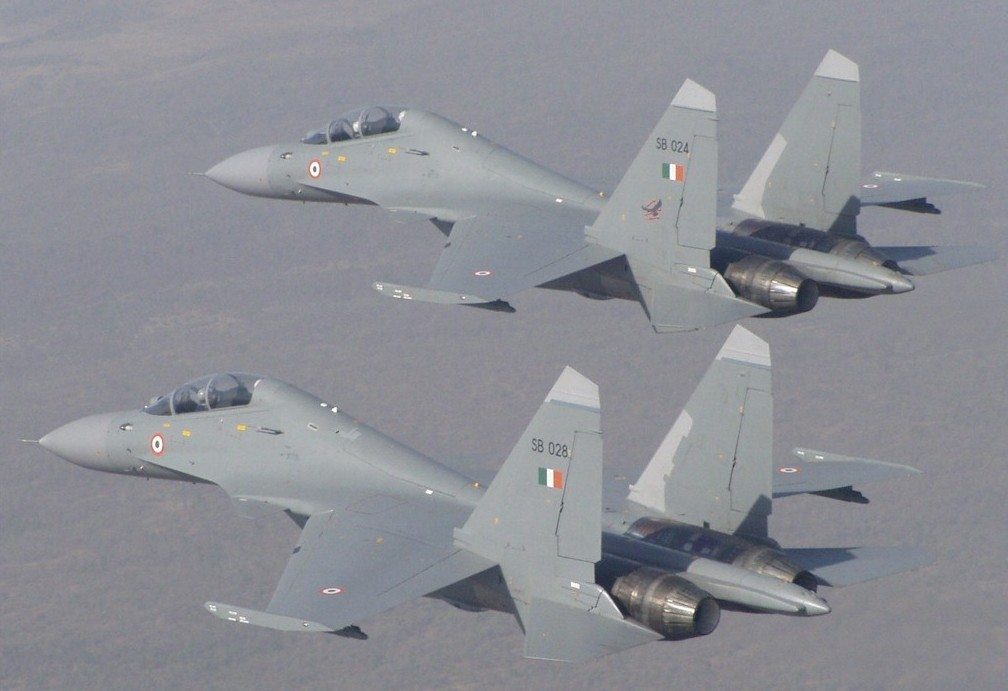According to Sputnik News, India and Russia are to discuss modernizing India’s Su-30MKI Flanker-H fleet at Aero India 2015 in Bangalore.
India is in the midst of a massive, military-wide modernization push that includes procurement of new assets as well as multiple and intensive upgrades to existing inventory. Some estimates put the total cost at over $100 billion. India seemed determined to push through with these upgrades regardless of economic concerns and at one point looked to spend up to $3.3 billion on a fleet-wide Su-30MKI upgrade program. Between the economic reality of such expenditure and some minor inroads with Pakistan, the nation may dial back the scope – or at least schedule – of its military overhaul.
The Su-30MKI is an advanced iteration of Sukhoi’s Flanker heavy fighter, which is known for its exceptional maneuverability. The MKI variant was developed specifically for the Indian Air Force, and features forward canards and improvements to its avionics and propulsion systems. It is roughly on par with Russia’s Su-30SM and the Chinese Su-30MK2, and in training exercises scored a controversial victory over the United States’ F-15C.
The BrahMos is a family of short-range, supersonic cruise missiles that will be available on a wide variety of platforms, including ships, land vehicles and aircraft. Flight testing [of the air-launched variant—Ed.] is scheduled to begin in 2015.
We estimate the cost to integrate the BrahMos on India’s Su-30MKIs at around $50 million, which includes reducing the munition’s weight and performing some additional structural modifications to the aircraft itself. That said, India is also looking to improve the Su-30MKI’s avionics and is likely to install an AESA sensor system, which is rapidly becoming standard on modern fighter aircraft. Details remain sparse, though the Phazotron Zhuk-AE is a solid candidate.
Meanwhile, India and Russia are also collaborating on a 5th generation fighter known as the T-50 or PMF (and previously as the FGFA). The T-50 is Sukhoi’s take on modern stealth theory, but a lackluster demonstration that ended with an engine fire has left India concerned.
Furthermore, India wants a two-seat version whereas Russia has only built five single-seat prototypes, and still refuses to allow Indian pilots behind the stick. The two nations have now agreed to fast track the program, which is costing India an estimated $25 billion (total), with a planned service entry of 2024.
Until then, India will ensure its Su-30MKI fleet is ready and able to respond to any threat or crisis.









